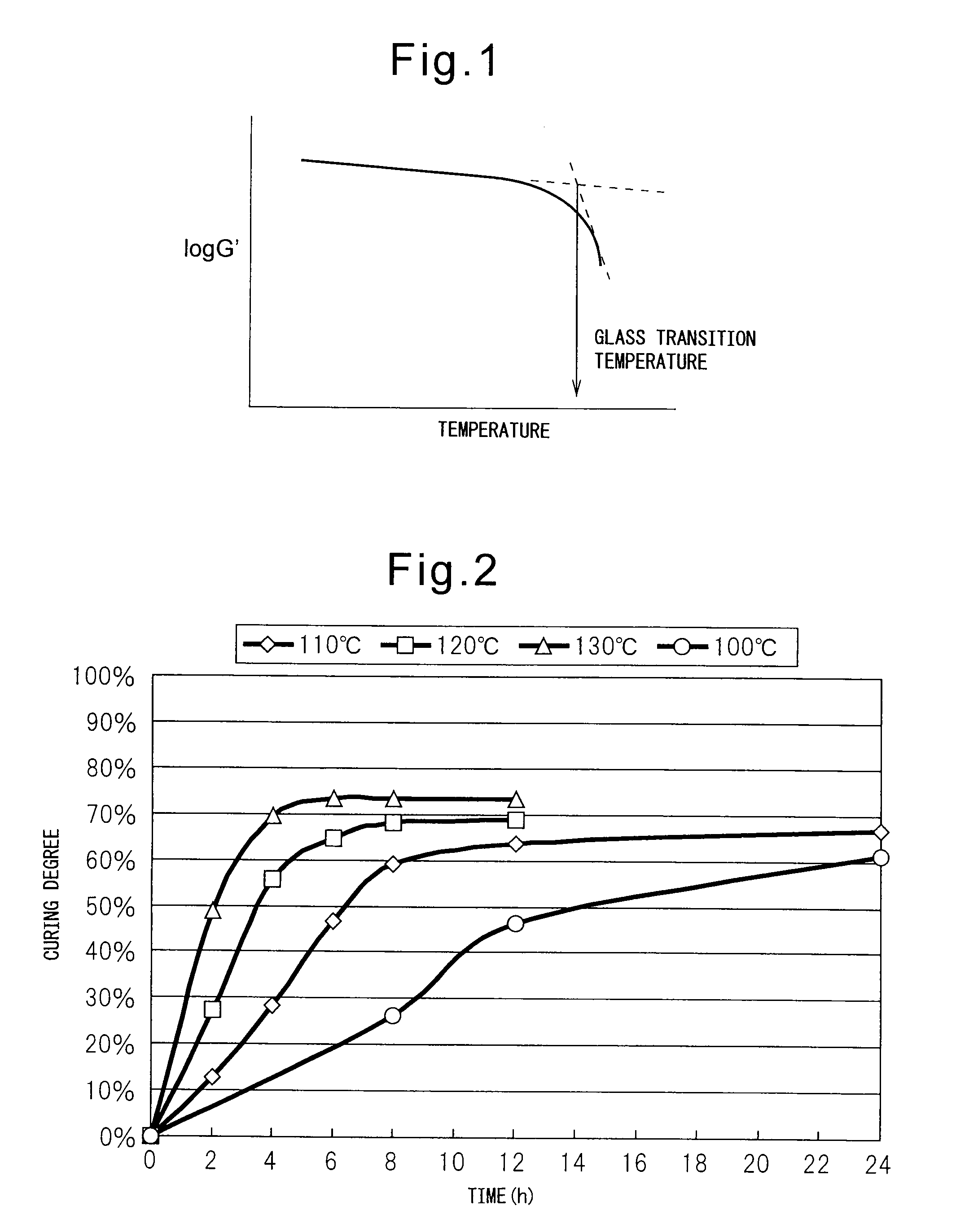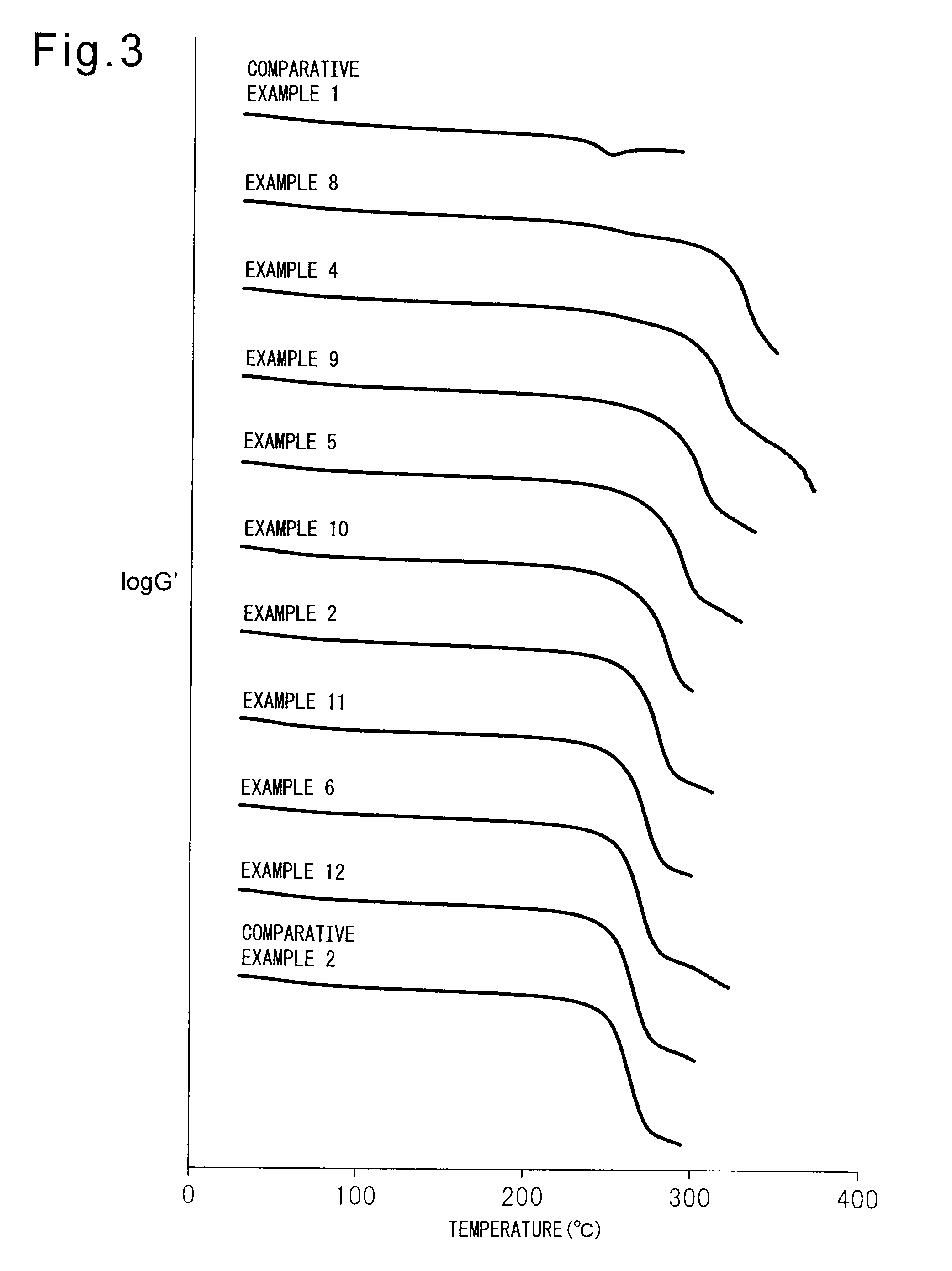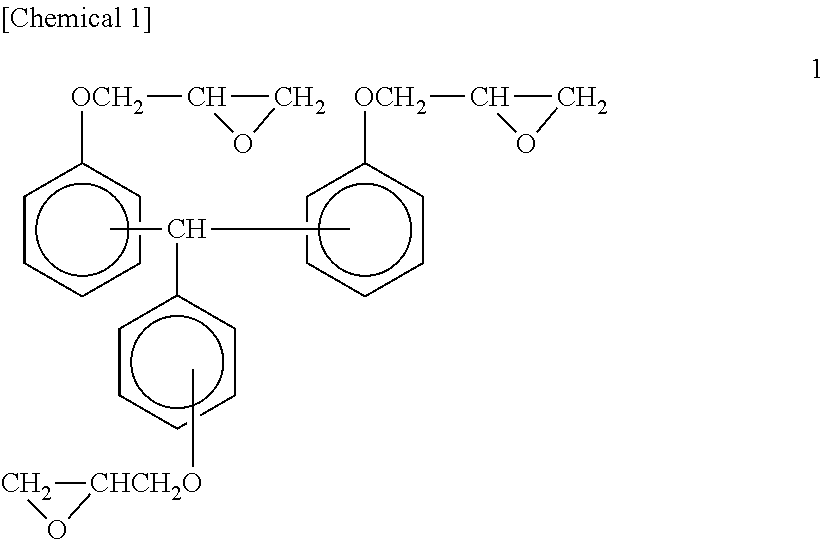Method for producing fiber-reinforced composite material, and heat-resistant mold material and heat-resistant structural material using the fiber-reinforced composite material
- Summary
- Abstract
- Description
- Claims
- Application Information
AI Technical Summary
Benefits of technology
Problems solved by technology
Method used
Image
Examples
examples
[0050]The construction of the invention will now be explained in detail based on examples in contrast to comparative examples.
Preparation of Epoxy Resin Composition
[0051]The matrix resin composition to be used for production of the prepreg may be prepared in the following manner. The following abbreviations are used for the components used in the epoxy resin compositions of the examples and comparative examples.
Epoxy Resin (A)
[0052]Tx742: Epoxy resin corresponding to formula 1, tris(hydroxyphenyl)methane triglycidyl ether, epoxy equivalents: 160 g / eq, Huntsman Advanced Materials Co.
Epoxy Resin (B)
[0053]jER604: N,N,N′,N′-Tetraglycidyldiaminodiphenylmethane, epoxy equivalents: 120 g / eq, Japan Epoxy Resins Co., Ltd.
Diaminodiphenylsulfone (C)
[0054]DDS: 4,4′-Diaminodiphenylsulfone, SEIKACURE S (ground product) by Wakayama Seika, amine active hydrogen equivalents: 62 g / eq
Silica (D)
[0055]A380: Silicon dioxide, AEROSIL380PE by Nippon Aerosil Co., Ltd.
Thermoplastic Resin (E)
[0056]YP50S: Phen...
examples 1-12
[0076]The resin compositions of Examples 1 to 12 were cured by moderate temperature primary curing (120° C. for 8 hours) and high-temperature secondary curing (200° C. for 2 hours) to obtain cured resins with both high mechanical strength (resin bending properties) and high heat resistance (DMA-Tg) (Table 1, Table 2, Table 3). Upon measuring the curing degree at different temperatures in Example 2, the curing degree exceeded 50% with 6 hours at 110° C., 3 hours at 120° C. and 2 hours at 130° C., whereas the curing degree did not exceed 50% at 100° C., even with heating for 12 hours (FIG. 2, Table 7). In Example 7, a composite was obtained having both high mechanical strength (12K cloth composite bending properties) and high heat resistance (12K cloth composite DMA-Tg) (Table 4). Also in Example 7, a satisfactory molded article was obtained with low resin flow and few resin excess areas (Table 5). In addition, the molded sheet obtained in Example 7 had a small thickness difference be...
PUM
| Property | Measurement | Unit |
|---|---|---|
| Temperature | aaaaa | aaaaa |
| Temperature | aaaaa | aaaaa |
| Temperature | aaaaa | aaaaa |
Abstract
Description
Claims
Application Information
 Login to View More
Login to View More - R&D
- Intellectual Property
- Life Sciences
- Materials
- Tech Scout
- Unparalleled Data Quality
- Higher Quality Content
- 60% Fewer Hallucinations
Browse by: Latest US Patents, China's latest patents, Technical Efficacy Thesaurus, Application Domain, Technology Topic, Popular Technical Reports.
© 2025 PatSnap. All rights reserved.Legal|Privacy policy|Modern Slavery Act Transparency Statement|Sitemap|About US| Contact US: help@patsnap.com



